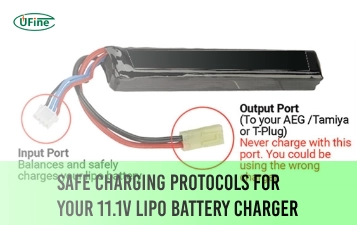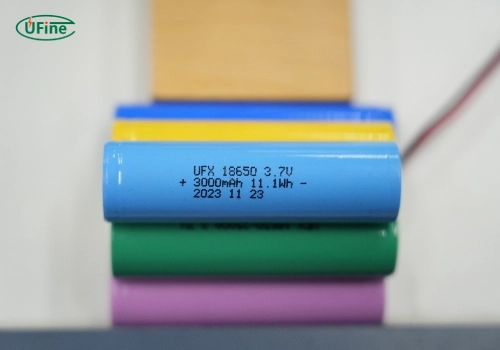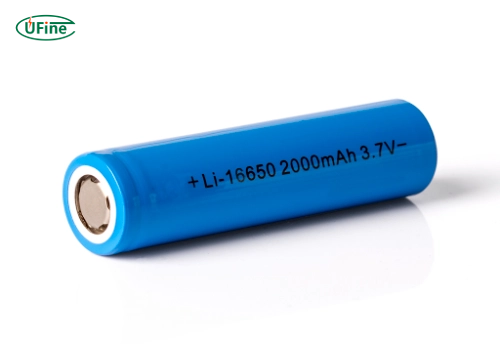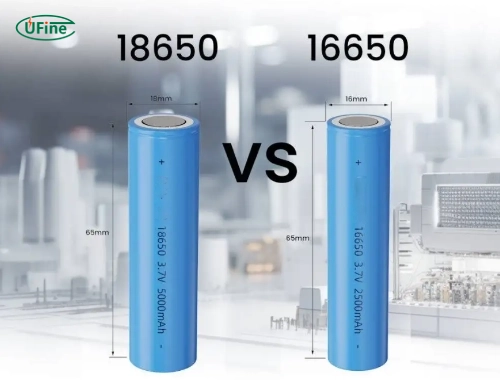The 18650 and 16650 batteries are two prominent contenders in rechargeable batteries. Each has its own set of characteristics, advantages, and applications. This article will delve into a detailed comparison between these two battery types, helping you understand their differences and decide which one is best suited for your needs.
Part 1. What is an 18650 battery?
The 18650 lithium-ion rechargeable battery measures 18mm in diameter and 65mm in length. Due to its high energy density and long cycle life, it is widely used in various applications, including laptops, flashlights, and electric vehicles.
Key specifications of 18650 batteries
- Dimensions: 18mm x 65mm
- Capacity: Typically ranges from 1800mAh to 3500mAh
- Voltage: 3.7V nominal, 4.2V when fully charged
- Discharge Rate: Varies, but high-drain versions can handle up to 30A
Applications
- Laptops: 18650 batteries’ high capacity and reliable discharge rate make them ideal for laptops, ensuring long-lasting power for mobile computing.
- Power Tools: These batteries provide the necessary energy for power tools, efficiently supporting heavy-duty tasks.
- Electric Vehicles: Their ability to handle high discharge rates and long cycle life makes them perfect for electric vehicles, contributing to longer travel distances on a single charge.
- Flashlights: In high-performance flashlights, 18650 batteries deliver bright, consistent illumination, which is crucial for everyday use and emergencies.
What Size are 18650 Batteries?
Part 2. What is a 16650 battery?
The 16650 battery, on the other hand, is slightly smaller, with a diameter of 16mm and a length of 65mm. People often use it in devices where space is constrained, such as LED flashlights and electric toothbrushes. Despite its smaller size, it offers a decent capacity and performance.
Key specifications of 16650 batteries
- Dimensions: 16mm x 65mm
- Capacity: Typically around 1800mAh to 2500mAh
- Voltage: 3.7V nominal, 4.2V when fully charged
- Discharge Rate: Generally lower than 18650, around 5A max
Applications
- LED Flashlights: The 16650 battery’s compact size and reliable capacity make it perfect for LED flashlights, providing bright and dependable light.
- Electric Toothbrushes: These batteries offer enough power for thorough cleaning sessions while fitting neatly into the device’s design.
- Speakers: The 16650 battery’s balance of size and power ensures good sound output and portability for portable speakers.
Part 3. 18650 Battery vs 16650 Battery
Choosing between an 18650 and a 16650 battery can be crucial for your device’s performance. Let’s dive into a detailed comparison of these two types.
1. Capacity Comparison
When it comes to energy storage, the 18650 battery takes the lead. It typically offers capacities ranging from 1800mAh to 3500mAh. It can store more energy, making it ideal for high-demand devices. On the other hand, the 16650 battery usually provides 1800mAh to 2500mAh. While slightly lower, it still offers enough power for smaller gadgets.
2. Size and Fit
Size is a crucial factor when choosing a battery. The 18650 battery measures 18mm in diameter and 65mm in length. Its larger size makes it suitable for devices like laptops and electric vehicles. The 16650 battery is smaller, with a diameter of 16mm and the same length of 65mm. This compact size allows it to fit into tighter spaces, such as LED flashlights and electric toothbrushes.
3. Discharge Rates
Discharge rate is the speed at which a battery can deliver power. The 18650 battery often supports higher discharge rates, up to 30A in high-drain versions. This makes it perfect for power tools and high-performance gadgets. The 16650 battery typically supports lower discharge rates, around 5A. This is sufficient for less demanding devices like flashlights and portable speakers.
4. Safety Features
Safety is crucial in battery selection. Both 18650 and 16650 batteries can come with built-in protection circuits. These circuits prevent overcharge, over-discharge, and short circuits, ensuring the batteries are safe to use. Always check for these safety features, mainly if you use the batteries in high-drain devices.
5. Cost and Availability
The 18650 battery is more widely available and has a broader range of capacities and discharge rates. This makes it easier to find the correct battery for your needs. The 16650 battery is less standard and might be slightly more expensive due to its specialized applications. However, it is still available from various suppliers.
6. Weight
Weight can be a deciding factor for portable devices. The 18650 battery is generally heavier due to its larger size and higher capacity. This added weight could benefit stability in devices like power tools but might be a drawback for portable gadgets. The 16650 battery is lighter, making it a better choice for lightweight devices like flashlights and small electronics.
7. Applications
Both batteries serve different purposes. Due to its high capacity and discharge rate, the 18650 battery is commonly used in laptops, electric vehicles, and power tools. The 16650 battery is often found in LED flashlights, electric toothbrushes, and portable speakers. Understanding your device’s specific needs can help you choose the correct battery.
8. Environmental Impact
Both 18650 and 16650 batteries are lithium-ion, which means they have similar environmental impacts. Proper disposal and recycling are essential. Many local recycling programs accept these batteries, ensuring they are processed safely and sustainably. Recycling helps recover valuable materials and reduces environmental harm.
Part 4. FAQs
-
Which battery lasts longer, 18650 or 16650?
The 18650 battery generally lasts longer due to its higher capacity, making it more suitable for high-energy-demand applications. -
Can I use a 16650 battery in place of an 18650 battery?
No, the 16650 battery is smaller in diameter and will not fit in devices designed for 18650 batteries. Always use the battery type specified by the device manufacturer. -
Are 16650 batteries safer than 18650 batteries?
Both batteries can be equally safe if they have built-in protection circuits. Always choose batteries with safety features to prevent overcharging and short circuits. -
What devices commonly use 18650 batteries?
18650 batteries are commonly used in laptops, power tools, electric vehicles, and high-performance flashlights. -
What are the main applications of 16650 batteries?
16650 batteries are often used in compact devices like LED flashlights, electric toothbrushes, and portable speakers.
Related Tags:
More Articles

Safe Charging Protocols for Your 11.1V LiPo Battery Charger
Safely charge your 11.1V LiPo battery by following proper rates, using safety tools, and avoiding common charging mistakes.
11.1 V LiPo Battery Airsoft: Boosting Field Performance
Upgrade your airsoft gun with an 11.1V LiPo battery for faster firing, longer runtime, and top-tier performance on the battlefield.
Batteries for Trolling Motors Lightweight vs. Leaf Blower Power
Explore the best lightweight trolling motor batteries and how they compare to leaf blower power for performance, portability, and runtime.
What Is a 2C Battery?
Learn what a 2C battery is, how C-rates affect performance, and how to calculate the number of batteries your device needs.
What Battery Does LED Strips Use?
Discover which batteries power LED strips best. Learn about voltage, capacity, battery types, and how to safely power your LED lighting projects.






